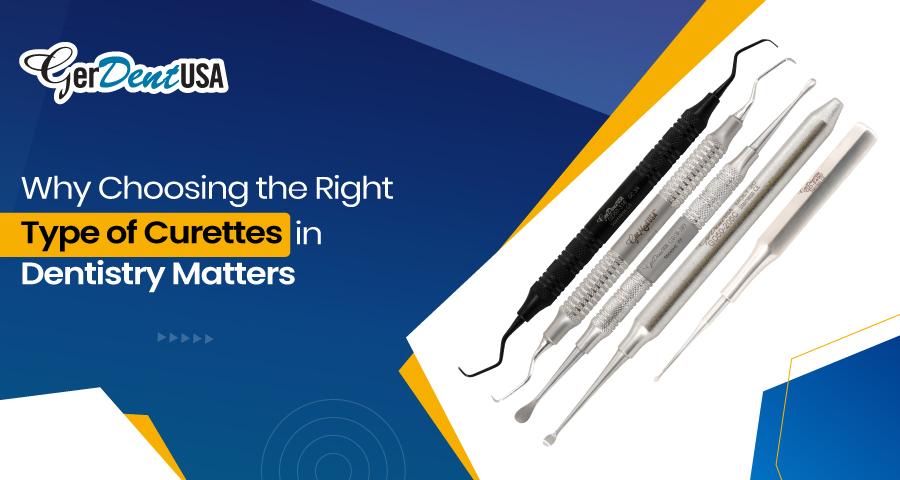Precision is key in the era of contemporary dentistry. While many dental instruments are essential for delivering top-notch patient care, curettes remain among the most critical tools in periodontal therapy. Knowledge of dental curettes is not only useful, it's a requirement for all dental hygienists, periodontists, and family practitioners seeking to uphold high levels of clinical standards.
From accessing deep periodontal pockets to polishing root surfaces, curettes help maintain a clean oral cavity and prevent disease progression. In this article, we'll learn about the various types of curettes used in dentistry, including their features, applications, and how to use them.
If you're a dental student, a practicing hygienist, or simply someone interested in learning more, this guide takes you through it all.
What Are Dental Curettes?
A curette in dentistry is a manually held instrument that is mostly utilized for subgingival scaling and root planing in periodontal treatment. Unlike sickle scalers, which are usually used above the gumline, curettes are made to reach below the gingival margin without causing trauma.
These instruments feature:
• Rounded toe and back for safe subgingival use
• Curved blades that conform to root anatomy
• Dual cutting edges (in most types)
• Available in various shapes, shank lengths, and blade angulations
They are especially valuable in managing chronic periodontitis and preserving periodontal health during routine cleanings.
Why Understanding the Different Types of Curettes Matters
Different cases call for different tools. Knowing the types of curettes in dentistry ensures:
• Better access to all surfaces of the tooth
• Minimal trauma to soft tissues
• More efficient removal of calculus and plaque
• Improved clinical outcomes
Now, let’s explore the main types of curettes available in GerDentUSA’s Periodontal Curette collection.
Types of Curettes in Dentistry
Here are a few of the most prominent and valuable types of curettes in dentistry:
1: Columbia Curette
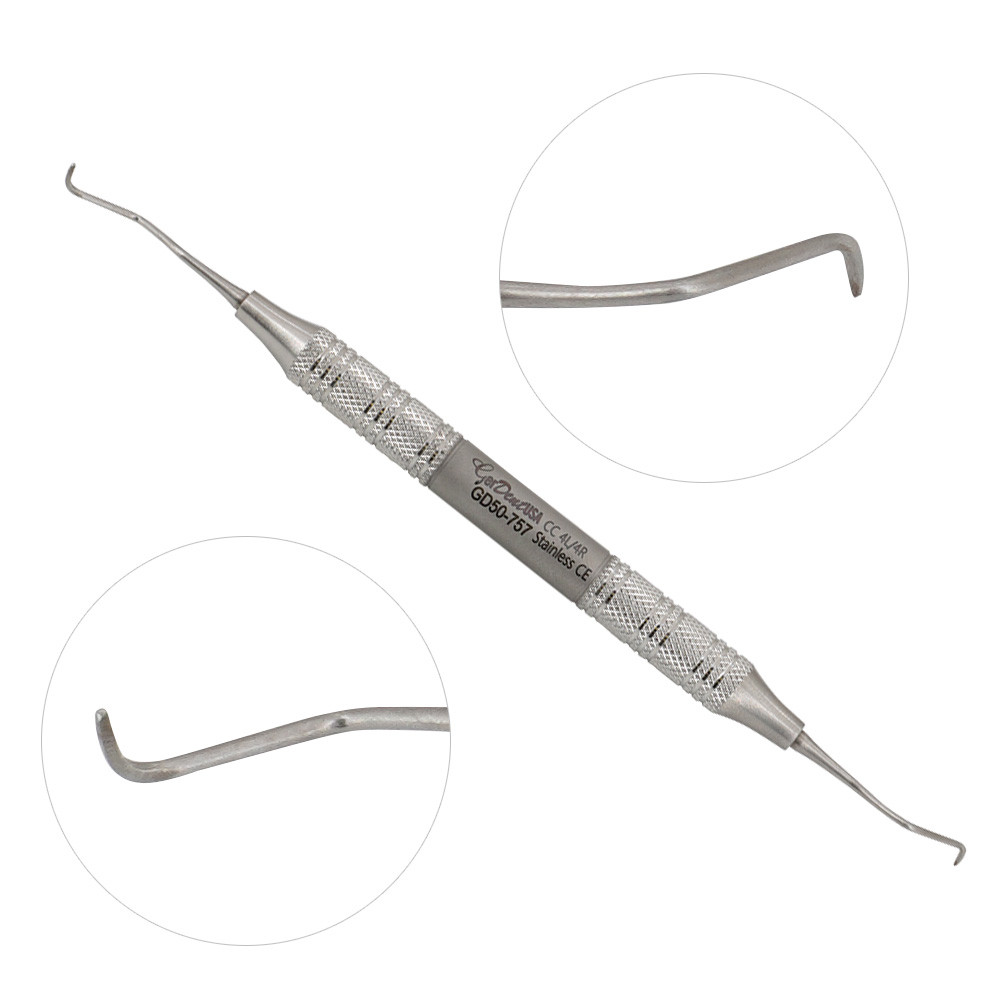
Columbia Curettes are ideal for removing subgingival calculus. These Periodontal Curettes have one or two cutting edges and a rounded back and toe. Columbia Universal Curette is used for the removal of minor calculus on incisors and premolars. These Curettes are available in the following variations:
• Columbia Curette Col 13/14C
• Columbia Curette Col 13/14
• Columbia, Curette Col 4R/4L
• Columbia, Curette Col 2R-2L
2: Debridement Curettes
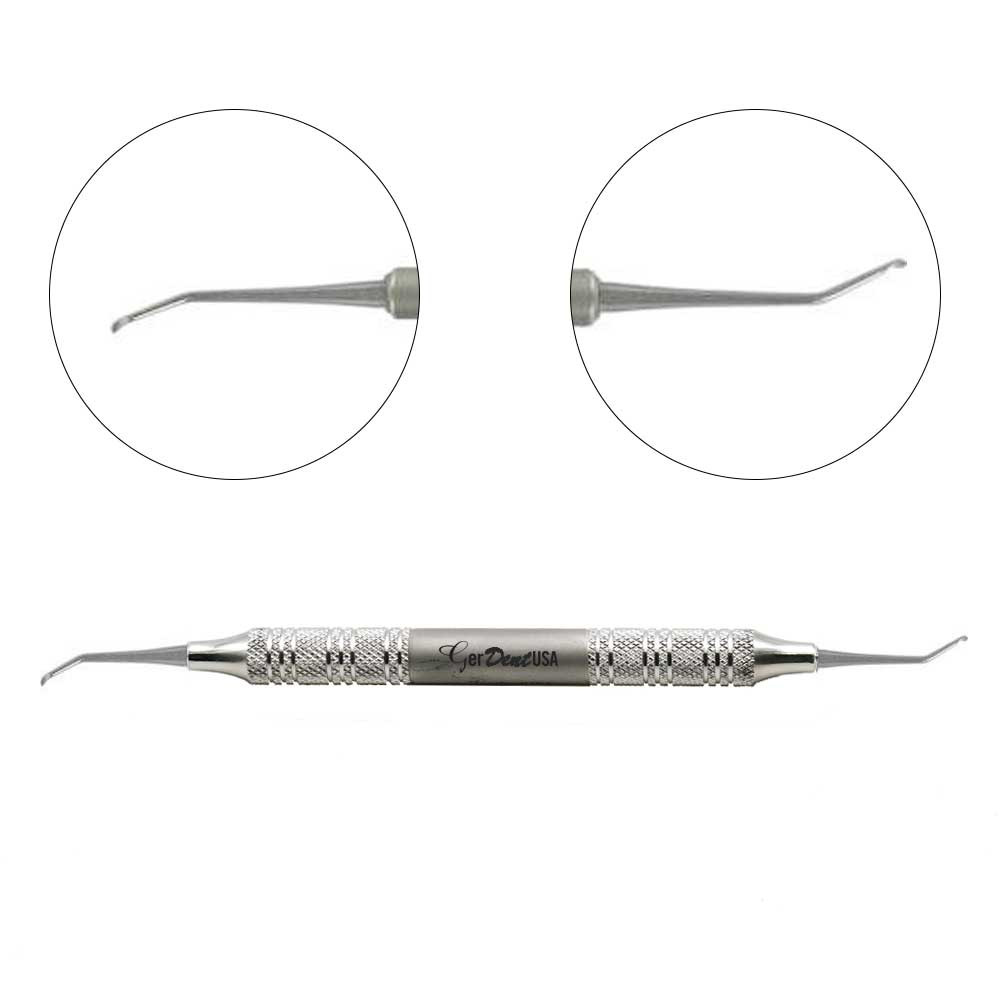
Debridement curettes are used in tooth cleaning and root planing. These curettes are available in the following variations:
• 7/8 Anterior Debridement Curette: used for anterior teeth, also suitable for other dental areas.
• 3/4 Debridement Curette: For distal and mesial surfaces of posterior teeth.
• 5/6 Anterior Debridement Curette: Used for anterior teeth, but can be suitable for other dental areas.
• 1/2 Debridement Curette: Used for lingual and buccal surfaces of posterior teeth.
3: Furcation Curettes
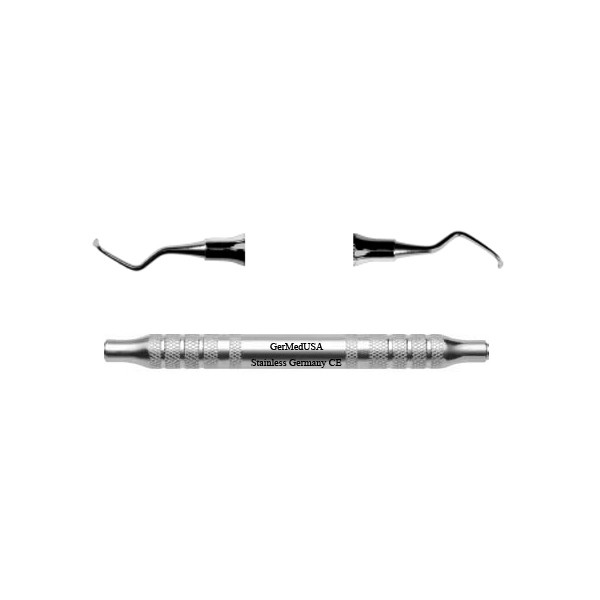
Furcation Curette is intended for the scaling and furcation of the root concavities. Dental furcation is an anatomical region where the roots split. This condition is also referred to as furcation involvement.
Furcation curettes are available in the following excellent patterns:
• Buccal-Lingual Quetin Furcation Curettes 1.3mm Blade, QBL2
• Buccal-Lingual Quetin Furcation Curettes 0.9mm Blade, QBL1
• Furcation Curettes DM2
• Furcation Curettes DM1
4: Gracey Curette
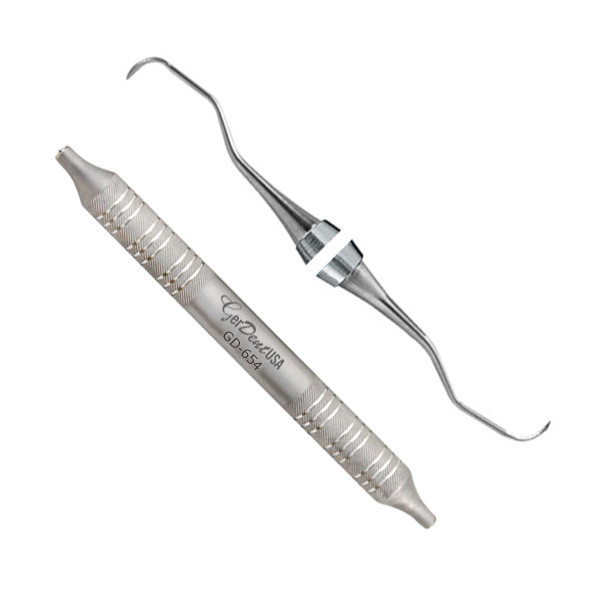
Gracey curettes, also known as Periodontal Gracey Curettes, are specially designed to extract supra and subgingival calculus. It is an area-specific instrument, which means it comes in different variations for different tooth surfaces.
Here are some significant variations of Gracey curettes:
• Gracey Curettes Mini-5 Pediatric Non-Reflective 17/18
• Gracey Curettes Mini Pediatric Non-Reflective 13/14
• Gracey Curettes Mini Pediatric Non-Reflective ½
• Gracey, Standard, GC 1/2, Titanium Coated
5: Kirkland Curette
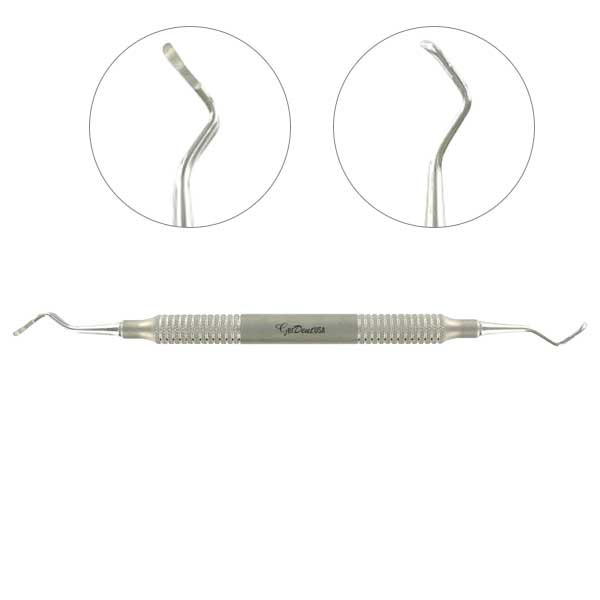
The Kirkland Curette is used for removing bone tissue and recontouring periodontal bone. They are easy to hold, comfortable, and provide a non-slippery surface to the users. The body of this dental instrument is made of premium-grade stainless steel.
These curettes are rust-free, reusable, and durable surgical instruments. Kirkland curettes are available in the following patterns or variations:
• Kirkland Surgical Curette KIR 12
• Kirkland Surgical Curette KIR 8/9
• Kirkland Surgical Curette KIR 4/5
6: Kramer Nevins
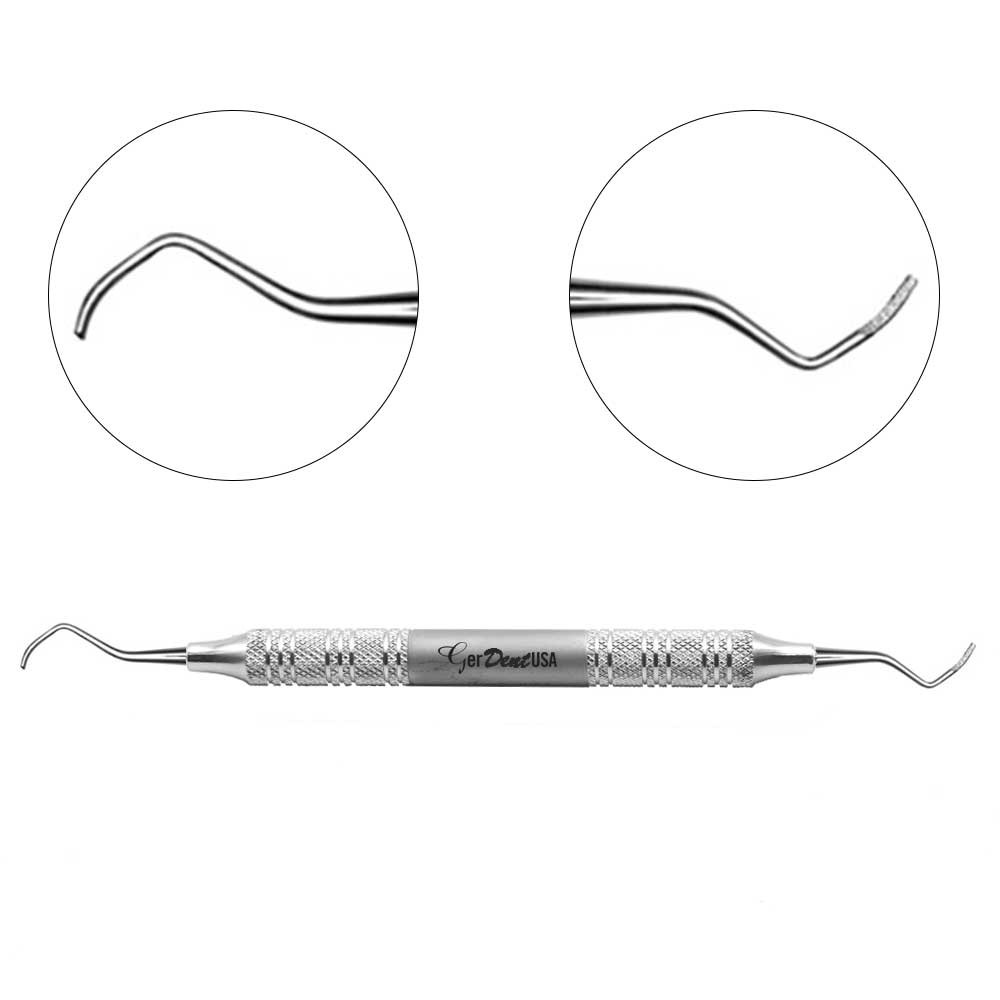
Kramer Nevins Curette is designed for subgingival curettage and root planning. It features a slightly modified curvature of the blade. The extra-long, thinner blade and double-ended handle provide greater access to the problematic area.
The following are some excellent available patterns of Kramer Nevins curettes:
• Kramer Nevins Surgical Curette KN5/6
• Kramer Nevins Surgical Curette KN1/2
7: Lucas Surgical Curette
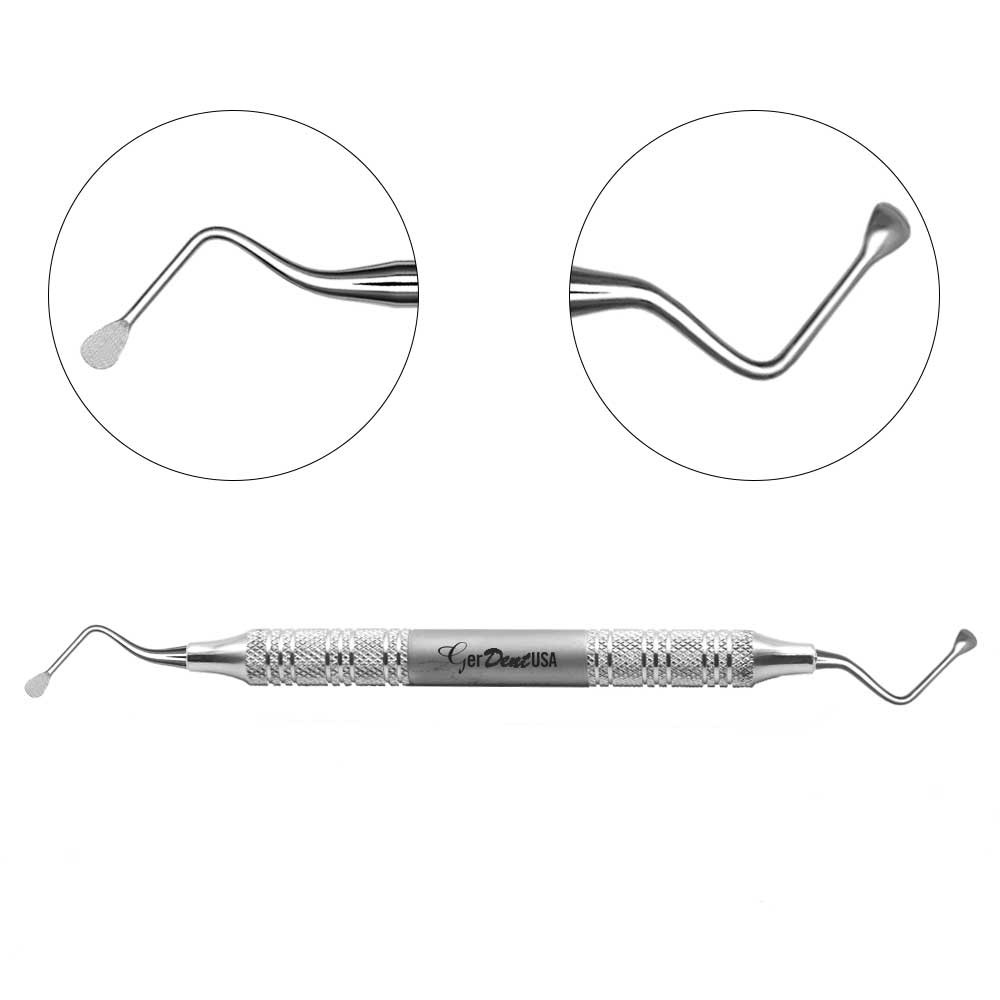
Lucas Surgical Curettes are used for curettage and cyst removal during dental surgical procedures. They can also be used to remove tissue and reduce damage to the tooth sockets. Lucas surgical curettes are available in the following variations or patterns:
• Surgical Curette Lucas, 88
• Lucas Surgical Curette 87
• Lucas Surgical Curettes 86AS Serrated
• Lucas Surgical Curette 86S, Serrated
• Lucas Surgical Curette 86
8: McCall Curette
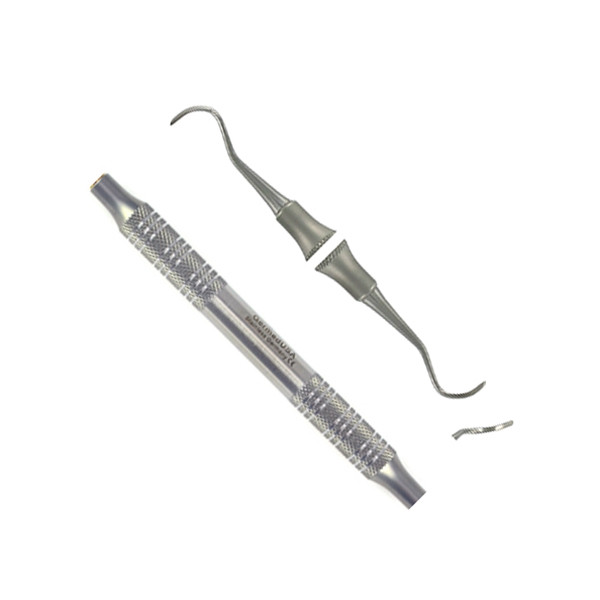
The McCall curette is used to extract excessive tartar in both the upper and lower jaws. It works exceptionally well, particularly for large molar surfaces. In addition, this dental instrument's edge is designed to ease the quick collection of tartar in one attempt.
These types of dental curettes are available in the following configurations:
• Mc17/18PS McCall Curette Round
• Mc17/18PT McCall Pointed Curette
• MTC13/14S McCall Pointed Curette
• MC13/14S McCall Pointed Curette
• MC13/14 McCall Rounded Curette
9: Miller Surgical Curettes
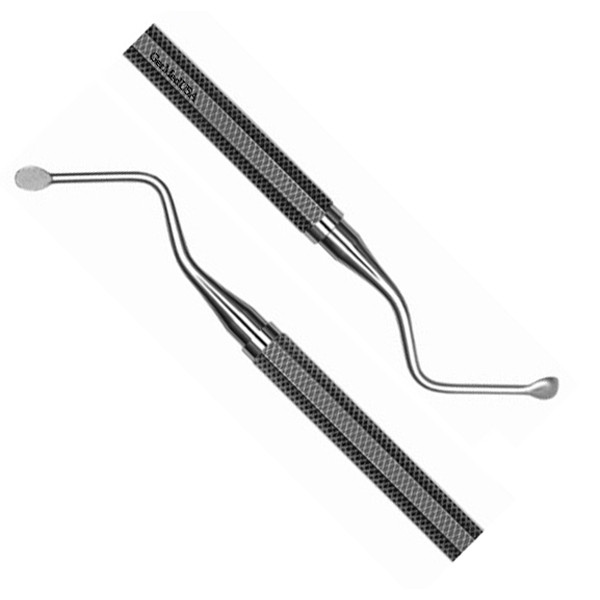
The Miller Surgical Curette is used to extract debris or tissue from the sockets. They reduce user work and enable them to operate smoothly. These instruments are designed to remain durable and resistant to corrosion.
These instruments come in the following patterns:
• Miller Surgical Curette 12
• Miller Surgical Curette 11
• Miller Surgical Curette 10
• Miller Bone Curette #9 Double-Ended - Straight
• Miller Bone Curette #8 Double-Ended - Straight Curved
10: Molt Surgical Curette
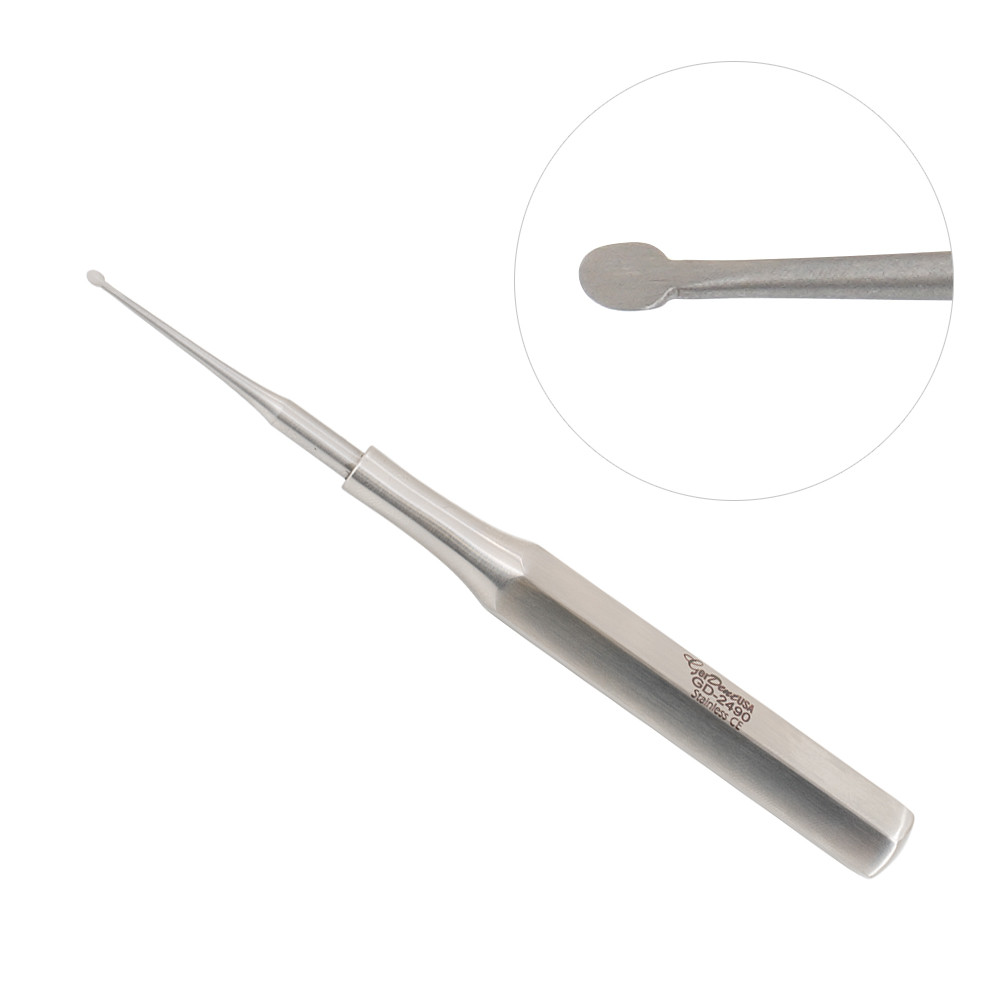
Molt surgical curette is used for curettage, cyst obliteration, and tooth socket resection. Molt curette is intended to provide superior performance and improve efficacy.
Environmental conditions do not compromise the instrument’s structure, making it suitable for long-term use. GerDentUSA made these with medical-grade stainless instruments to maintain the premium quality.
Molt surgical curettes come in the following patterns:
• 5R Molt Surgical Curette
• Surgical Curettes, Molt, 5L
• 4 Molt Surgical Curette
• 2/4 Molt Surgical Curette
How to Select the Right Curette Instrument
Selecting the appropriate dental curette depends on several factors.
• Tooth location: Anterior vs. posterior
• Surface type: Buccal, lingual, mesial, or distal
• Pocket depth: Shallow vs. deep
• Calculus load: Light vs. heavy deposits
Proper Care and Maintenance of Curettes
To extend the life of your curettes surgical instruments, follow these practices:
• Sharpen regularly to maintain cutting efficiency
• Avoid over-autoclaving to prevent metal fatigue
• Inspect blades for wear or breakage
• Use cassettes for safe sterilization and storage
Conclusion:
Curettes are more than just instruments; they’re vital in the fight against periodontal disease. From the precision of Gracey curettes to the versatility of Universal designs, each type serves a specific purpose in delivering effective, safe, and thorough care.
Understanding the types of curettes in dentistry helps professionals make informed decisions, improving clinical outcomes and patient satisfaction. At GerDentUSA, we support dental professionals across the U.S. with a comprehensive range of high-quality dental curettes instruments, crafted from German stainless steel for durability and performance.
Whether performing routine maintenance or complex periodontal procedures, our instruments are engineered to meet the demands of modern dentistry with precision and reliability.
FAQ's
1. What are curettes used for in dentistry?
Curettes are used for subgingival scaling, root planing, and removing soft and hard deposits from tooth surfaces below the gumline. They are essential tools in periodontal therapy and maintenance.
2. What is the difference between Gracey and Universal curettes?
Among the types of curettes in dentistry, Gracey curettes are area-specific with a single cutting edge, while Universal ones have dual edges suitable for all surfaces.
3. Which curettes are best for deep periodontal pockets?
The Gracey Mini Five and After Five are ideal curettes for deep periodontal pockets due to their long shanks and thin blades.
4. Are there curettes specifically for anterior teeth?
Yes, certain types of dental curettes, like Gracey 1/2, Columbia 13/14, and Curvette 1/2, are specifically designed for anterior teeth.
5. How often should dental curettes be sharpened?
It depends on use, but generally after every few procedures to maintain cutting efficiency and patient comfort.

